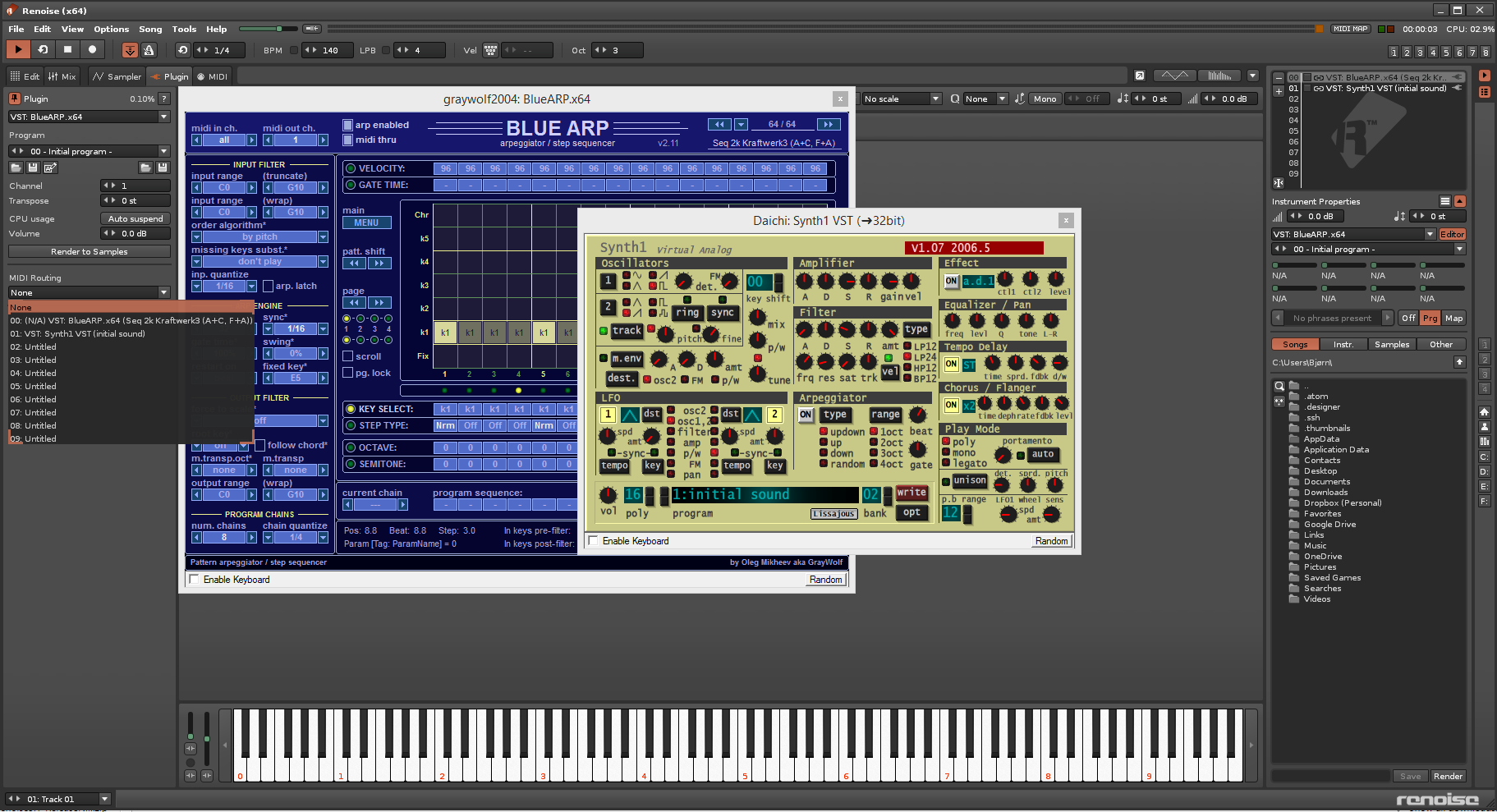
I think that’s about it for now… too many questions.Ī big shout out to the developers of this software, just the fact that your keeping the tracking scene alive with software like this deserves a big pat on the back. Is it possible to load up sample banks other than sample files eg WAV files, any way to import Ableton sample packs into Renoise? The last thing I want to do is choose one then move onto the next. In personal or professional opinions is something like Renoise inferior, superior to software like Ableton when it comes to composing music, what are the pros and cons of each. Is Renoise, really the best option for me, if I want to utilize my external Midi equipment like my MPK Mini as a Synth to play notes, or samples etc…etc… Is this even possible to configure it with Renoise ? When I play my Impuse Tracker original tracks they do not sound as good as playing them thru Schism Tracker, why is this ? Sorry for the long winded intro, here are my questions. So I found Renoise, Schism Tracker as options for modern day tracking. I have not really invested too much time in Ableton at the moment, but my roots are really with Trackers, that is what I know and remember. So I initially thought something like Ableton was the go to product and not only did I buy a license for it which cost a pretty penny, I invested in an external soundcard a Native Instruments Komplete 6, an Akai MPK Mini as well. The dream of getting back in writing music has been haunting me for 20 years now and I feel I am now ready again. Here I am 43 years old, 2 kids, beautiful wife, living the dream… That was about 20 years ago…Due to circumstances in those times, composing became a second hobby and soon was not something I could dedicate time to anymore. Impulse Tracker opened up doors for me to the point of being one of the very few who took a PC to rave parties in Sydney and played live with Impulse Tracker.

I had the pleasure of communicating with Jeffrey Lim a couple of times in those days.

You can argue that Electron apps have some disadvantages, and that a native Windows app would have been far superior, but the truth of the matter is that we don’t actually have one at the moment, making G Desktop Suite one of the few good alternatives, and definitely one worth checking out.So just a brief history I used Impulse Tracker back in the mid 90’s, was the beginning of my journey with composing music and by far the best experience of my mid to late teens. Given the circumstances, the principle behind G Desktop Suite is a valid one. It brings to your desktop all the functionalities, features, and little niggles of Google Drive (Google Sheets, Docs, Slides, and Forms are all integrated within), and it even has a Dark Mode to make working at night a little more bearable, and that’s pretty much about it. The main advantage of the app is, of course, the fact that it allows you to work with Google Drive in a more “enclosed” environment and outside your browser. The main reasons why G Desktop Suite is worth trying out It’s also not as fast as the web app, but it’s not what one might call a hindrance. Being an Electron-based app, you should not expect the app to be lightweight, but that does not mean that your modern computer’s performance will take a toll while running it. It’s basically an ElectronJS-based application (a desktop wrapper to be more precise) designed to run remotely on your desktop (by emulating the functions of a web browser). Therefore, if you’re tired of having to access Google Drive via a web browser (and potentially mix it up with other tens of tabs), then you could check out a third-party app called G Desktop Suite.

Sadly, in September 2017, Google announced that it would discontinue the Google Drive desktop app. What is G Desktop Suite and why you might need it? Not only that, but it can be accessed on pretty much all platforms thanks to its dedicated mobile apps for iOS and Android, and remarkably well-sorted web apps (accessing via web browser). There’s not much one can reprimand to Google Drive since it’s great at allowing you to create, edit, store, and share documents, and basically all sorts of other files. While they’re pretty much on par in terms of features and functionalities, Google Drive offers more free space and, naturally, caters to a greater global audience thanks to its unique integrations with other Google services. When it comes to cloud-based storage and synchronization services there are two big names that usually come up: Google Drive and Microsoft OneDrive.


 0 kommentar(er)
0 kommentar(er)
